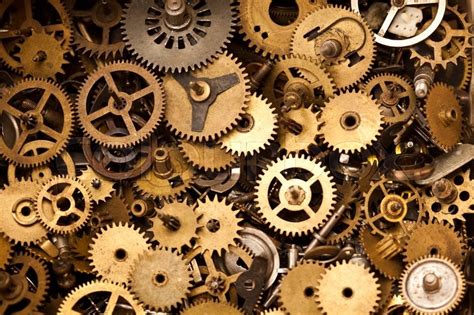|
home | what's new | other sites | contact | about |
||||
|
Word Gems exploring self-realization, sacred personhood, and full humanity
Quantum Mechanics
return to "Quantum Mechanics" main-page
What does "quantum" mean? the smallest bit of anything a discrete amount, packet, or elemental constituent component "quantum" (singular), "quanta" (plural) “quantum” is an ancient Latin word meaning “how much” For example, a quantum of the ocean would be one molecule of water. To "quantize" something is to structure it as separate parts: a slope, an inclined plane, is a steady rising, but a staircase is quantized, in that, the slope is broken into discrete steps.
What does "mechanics" mean? related to, resembling a, "machine" extended meaning, oftentimes, is "motion" The sense is that of a complex machine with moving parts, an integrated dynamical system.
Common definition: Quantum Mechanics (QM) is a branch of physics which investigates the motion and interaction of the smallest elements of matter, atomic and sub-atomic particles. Editor's note: This common definition is somewhat misleading, however, as QM, properly viewed, is not the science of small things, as such, but uncertain things; it speaks to large objects, as well. QM is popularly associated with small things because, with these, uncertainty is a significant issue but not as much with macro, slow-moving objects. See articles in this regard on the main-page.
Editor's note: See the article later in the series which offers a clear view concerning the meaning of quantum mechanics; by way of contradistinction, it describes the new physics. "Mechanics" in extended meaning signifies "motion," and this is set against, in terms of answering, the great Newton with his "laws of motion." Newtonianism works only on the macro-level, and so QM offers itself as "laws of motion" on the micro-level, unaddressed by Newton.
reprinted from the McGilchrist page: 'quantum non-mechanics' ... we cannot simply account for organisms from the bottom up [atoms to molecules, etc], but must do so at least as much from the top down. Not to mention from the sides, as in a web. We might be accustomed to thinking of biological processes in the abstract, isolated artificially by our mode of attention. But each element in each process is likely to be involved in several other ‘causative chains’, more like an unimaginably complex piece of choreography, where members of one group pass in and through another, for a while belonging to both or neither – each process having its own apparent end. It is the difference between a sequence – a concatenation, a chain – and a single, indivisible movement, a flow. Flow is a process: a chain is a series of things, that are static until one is given a push or a pull by the thing next to it. An organism is a flow, and is alive. A machine is a chain, and is dead. David Bohm puts it well: ‘The entire universe must, on a very accurate level, be regarded as a single indivisible unit in which separate parts appear as idealisations permissible only on a [Newtonian] classical level of accuracy of description. This means that the view of the world being analogous to a huge machine, the predominant view from the sixteenth to nineteenth centuries, is now shown to be only approximately correct. The underlying structure of matter, however, is not [as per the] mechanical term ‘quantum mechanics’ [and] is very much of a misnomer. It should, perhaps, be called ‘quantum non-mechanics.’ Editor's note: I think Bohm is saying, the universe is not a machine and we should not be viewing it as if it has parts; what appear to be solid parts fade away upon inspection. "Mechanics" has to do with motion, usually a movement of parts, but there are no parts moving chain-like in the universe but only one undivided whole, like a flowing stream - which would beg the term "quantum non-mechanics."
|
||||
|
|




